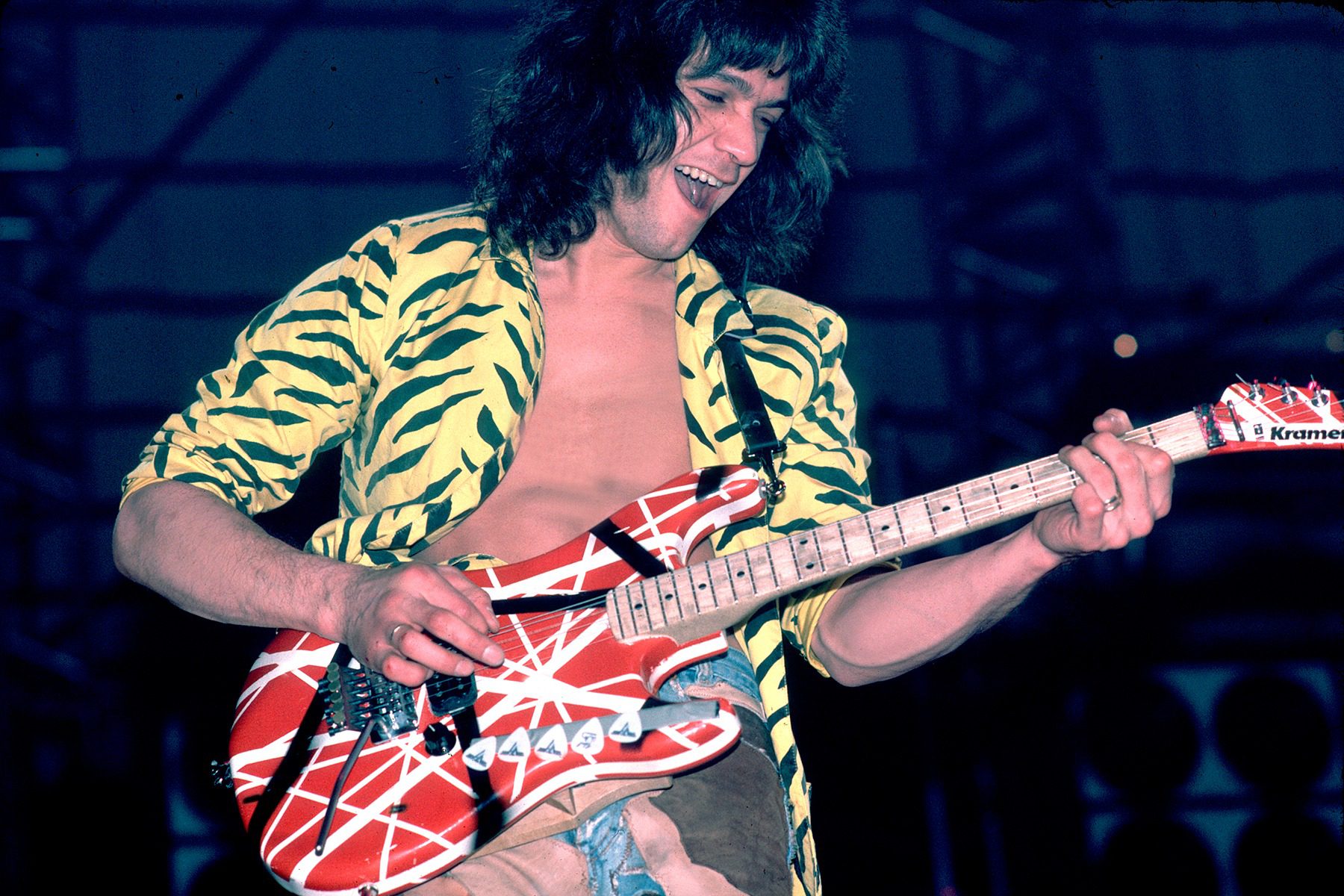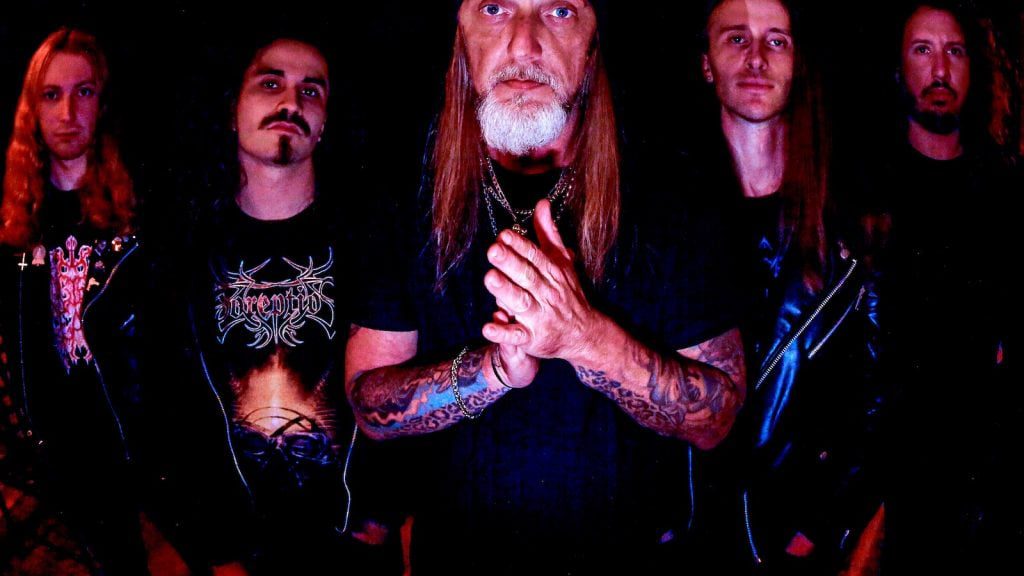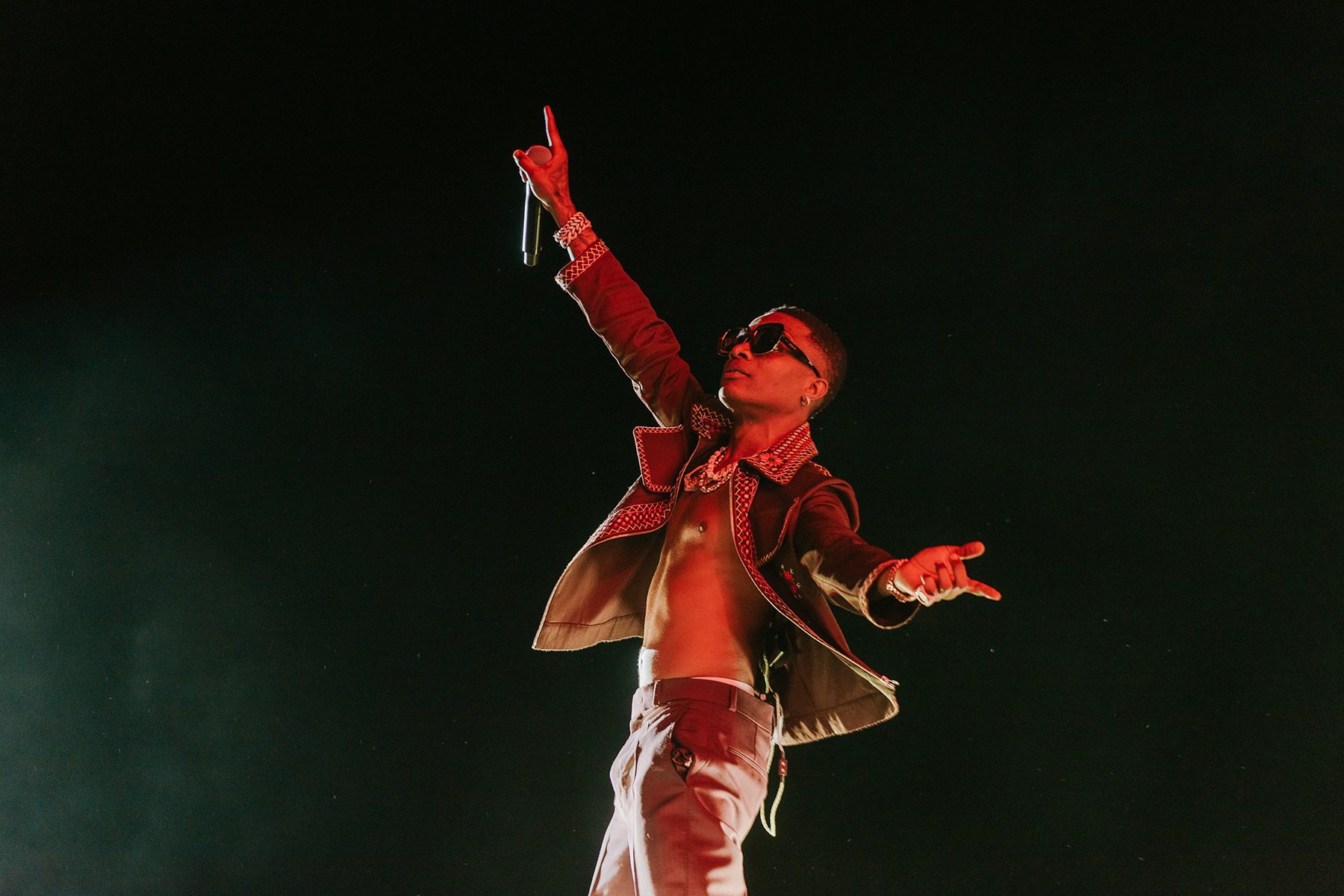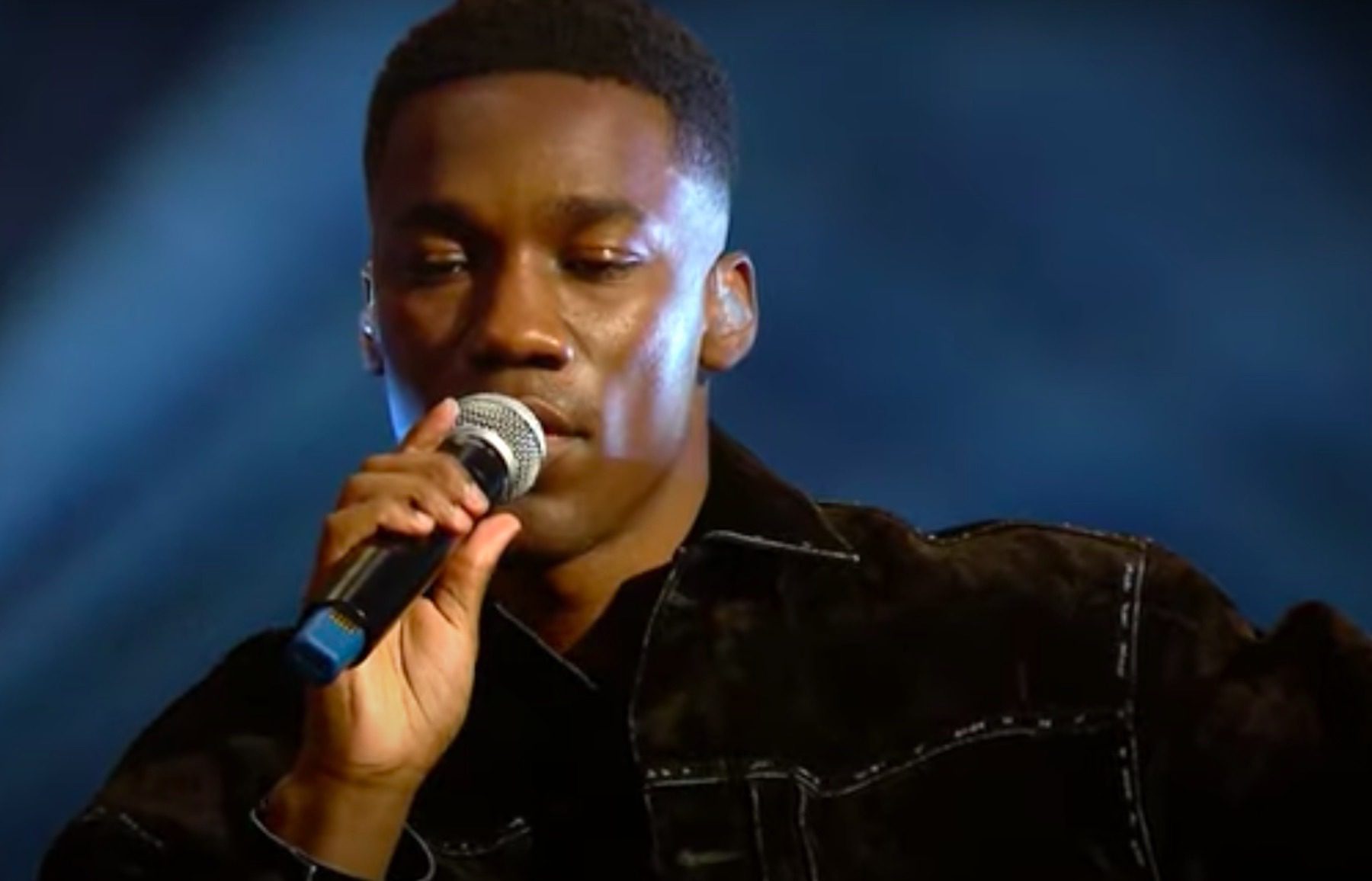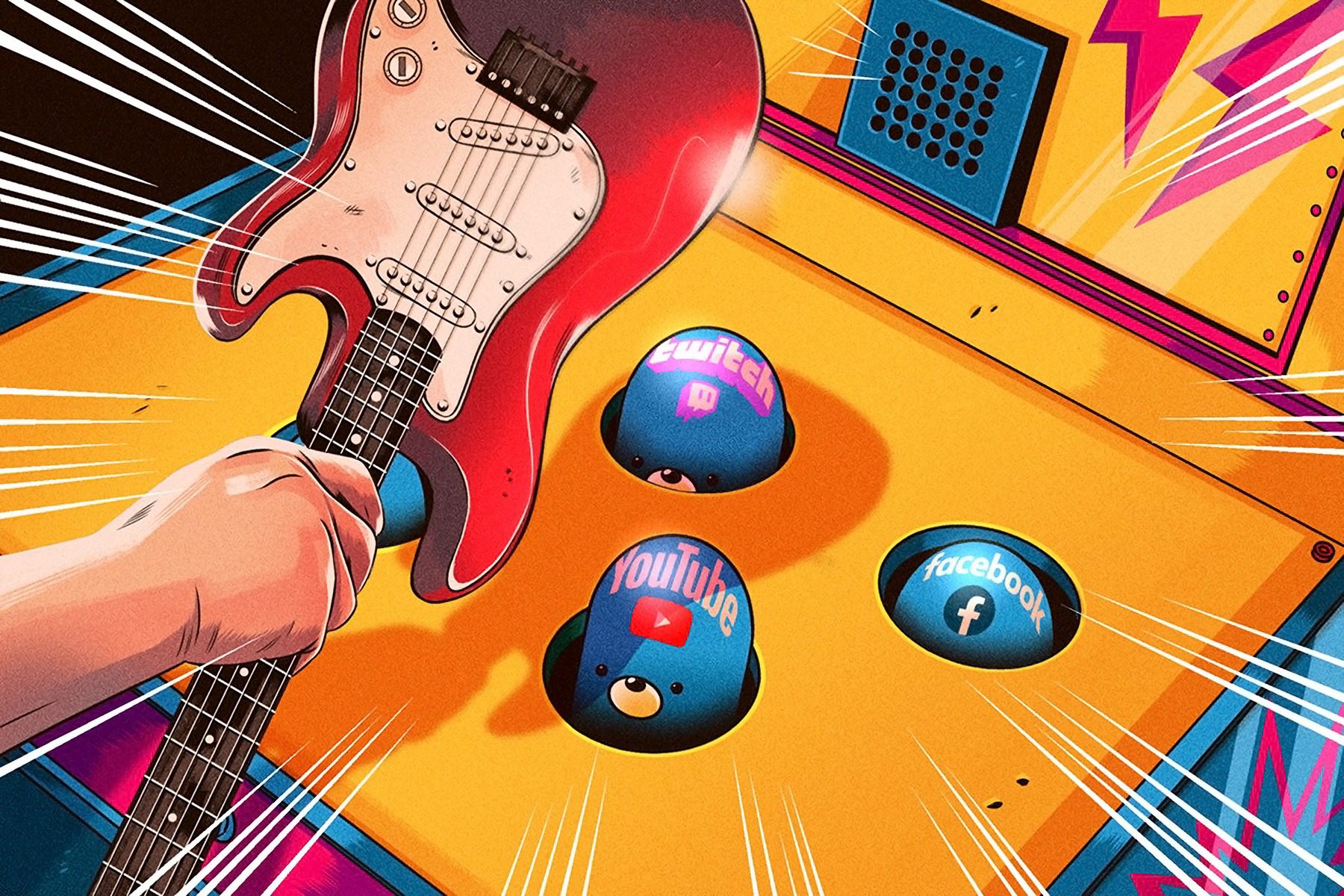
Music’s Whac-A-Mole Menace: How the Moldy, Lopsided DMCA is Hurting Artists
Like so many kids at the dawn of the new millennium, Michelle Maalouf knew the best place to get music was the internet. The then-teenager’s platform of choice was Kazaa, and her download list was filled with the classics of the day: boy bands, Britney Spears, Christina Aguilera, Mariah Carey. “Everyone I knew downloaded music for free,” Maalouf remembers. “Any type of music. I didn’t know that there was anything wrong with it. I thought it was just a way of listening to music and a way to explore.”
But unlike the vast majority of teens and young adults who consumed music this way in the year 2000, Maalouf was among the unlucky recipients of a copyright-infringement lawsuit filed by the Recording Industry Association of America: “One day, my parents got a letter in the mail that said we were being sued for downloading music, and of course they had to ask us, ‘What is this?’ ”
Maalouf’s parents reached a settlement with the RIAA. Not long after, Maalouf got a call from a casting director, and found herself, along with other teenagers who’d felt the music industry’s wrath, as poster kids in a Super Bowl commercial announcing a partnership between Apple and Pepsi to give away a million free, but legal, downloads on the newly launched iTunes Store. “Obviously after that, we were very careful not to download anything for free that we didn’t know was legal,” says Maalouf, who now works as a consultant for tech companies making products for older adults. “But for a long time, I still knew people who were downloading illegal music and nothing ever happened.”
blogherads.adq.push(function () {
blogherads
.defineSlot( ‘medrec’, ‘gpt-dsk-tab-article-inbody1-uid0’ )
.setTargeting( ‘pos’, [“mid-article”,”mid”,”in-article1″,”mid-article1″] )
.setSubAdUnitPath(“music//article//inbody1”)
.addSize([[300,250],[620,350],[2,2],[3,3],[2,4],[4,2],[640,250]])
;
});
In the annals of disastrous corporate PR decisions, few are as bad as the music industry’s scorched-earth response to peer-to-peer piracy in the early 2000s. Along with suing individual users, the record labels buried Napster and its progeny, like Kazaa and Limewire, with legal challenges. The damage piracy did to the industry’s bottom line in the mid-2000s was devastating — but still worse were the self-inflicted reputational wounds, which complicate an arguably greater copyright crisis going on right now, nearly two decades later.
In 2021, copyright infringement is less about individuals on torrent trackers than some of the biggest websites in the world, like YouTube and Twitch. The contours are drastically different from the days when forking over $18 for a CD was suddenly rendered pointless when you could just get “Chop Suey!” or “Bye, Bye, Bye.” Nowadays, music is a constant presence on, if not a fundamental component of, the internet’s most valuable platforms, yet musicians, artists, and songwriters are rarely compensated like it is.
The reasons are myriad — exploitation is one hell of a Hydra — but one gnashing dragon head is a piece of copyright legislation: the Digital Millennium Copyright Act.
The DMCA was passed October 28th, 1998 — nine months before Napster launched— and more than 20 years later, it still undergirds the internet’s copyright status quo in the United States. It’s a broad piece of legislation, but the most impactful part for the music world is Section 512, which established safe-harbor provisions that insulated digital service providers from copyright-infringement liability. In 1998, this made decent sense, as the onus of copyright liability could crush companies before they got started. The DMCA allowed these scrappy innovators to put down roots and grow into the trillion-dollar, world-crushing conglomerates we know and love today.
But when it comes to music, the rigid law is viewed with great suspicion. Whether or not someone is old enough to remember RIAA lawsuits and Metallica losing its shit over Napster, it’s likely they hear “DMCA” and think “record-industry greed.” Last year, for example, when news spread that Congress’ $2 trillion omnibus package would include a bill classifying illegal streams as felonies, a rash of misfiring critics claimed that anyone caught playing unlicensed music on Twitch streams or YouTube videos, even accidentally, would risk jail time. Even though the bill was actually aimed at sites that, say, offered illegal streams of NBA games, one creator, Penguinz0 (otherwise known as Cr1TiKaL, real name Charles White Jr.), unleashed a mighty but misinformed screed against the bill, its sponsor, Republican Sen. Thom Tillis, and a party that wasn’t going to see any material benefit: the music business.
blogherads.adq.push(function () {
blogherads
.defineSlot( ‘medrec’, ‘gpt-dsk-tab-article-inbody2-uid1’ )
.setTargeting( ‘pos’, [“mid-article2″,”mid”,”in-article2″,”mid-article”] )
.setSubAdUnitPath(“music//article//inbody2”)
.addSize([[300,250],[300,251],[620,350],[2,4],[4,2],[3,3]])
.setLazyLoadMultiplier(2)
;
});
“Currently a DMCA strike at absolute worst is a misdemeanor, but that’s not severe enough for the music industry,” Penguinz0 said, adding: “If you heard a song that you didn’t pay for, or even worse, accidentally had it playing in the background of a video, they’d probably just beat you to death with a baseball bat if it was up to the music industry.”
The clip has more than 3.4 million views.
“At the end of the day, your exposure doesn’t mean shit” — Morgan Kibby (White Sea)
It’s never outrageous to think the music industry — with its interminable track record of misusing artists — might be up to something avaricious. But the reality is more convoluted. The DMCA has created a landscape that not only makes it exceedingly difficult for anyone in music to track and monitor their copyrights, but also all the legal, licensed music you see on YouTube, TikTok, Facebook — artist advocates and industry figures claim these companies have been able to leverage their copyright liability protections to set outrageously low payouts to the rights holders of all that music.
For major labels and superstars — who are enjoying and hoarding the biggest bounties of the streaming era — this could be considered a big, fat annoyance at worst. But for those outside the top tier, the overwhelming sentiment is that they’re getting shafted by the status quo.
Nowhere is this more clear than the platform that became Napster’s true successor: YouTube. Spotify may be known as the leading music-streaming service, but YouTube is the real behemoth. Its most-watched clips are music videos or music-related, “Baby Shark Dance” towering over them all with more than 9 billion views. Much of that music is available in perfectly legal and licensed forms, but plenty is not. And for countless artists and labels, dealing with all that infringing content is a nightmare.
Morgan Kibby, a working musician who’s collaborated extensively with M83 and releases her own music as White Sea, remembers watching her 2015 track “Stay Young, Get Stoned” rack up thousands of views on YouTube — just not on her page, where she could actually make money. Sniffing out those illegal uploads was like playing a torturous game of Whac-A-Mole, a metaphor that comes up constantly when artists, labels, and advocates vent about the frustrating realities of the DMCA. It’s an expensive, tedious task, and while major labels and some of the bigger indies have the resources to play (not that they like it), the vast majority of working artists, like Kibby, do not.
blogherads.adq.push(function () {
blogherads
.defineSlot( ‘medrec’, ‘gpt-dsk-tab-inbodyX-uid2’ )
.setTargeting( ‘pos’, [“mid”,”mid-articleX”,”in-articleX”,”mid-article”] )
.setSubAdUnitPath(“music//article//inbodyX”)
.addSize([[300,250],[300,251],[3,3],[620,350]])
.setLazyLoadMultiplier(2)
;
});
But even more frustrating was a video she discovered for “Stay Young, Get Stoned” that proclaimed it was the “official music video.” “It was god-awful — and it had way more streams than my official version of the song!” Kibby recalls of the ersatz clip. “It was really disheartening. There are tons of people who probably haven’t heard my music before, but have seen that video, and it can completely derail how they might think about me and my catalog.”
An argument often trotted out in these instances is that artists should chill out about this kind of copyright infringement and be ecstatic that their music is gaining traction online at all. In other words, they should be happy for the exposure.
To that, Kibby retorts: “Exposure is such a fallacy. You’re talking to an artist that has gone through intense phases of saying yes to everything, because it’s how you build community, your résumé, your skills, etc. But at the end of the day, your exposure doesn’t mean shit.”
The internet has opened up music in wonderful ways, and many musicians have benefited from viral moments mixed with a bit of copyright infringement. But the main reason exposure “doesn’t mean shit” to most artists is that the DMCA intensifies the crisis that began with the MP3 — the decimation of the financial value of a song.
Richard James Burgess, an English musician and CEO of the American Association of Independent Music (A2IM), put it this way: “It used to be there were five financial pillars to the music industry, and now we’ve almost thrown the recording pillar away and said, ‘That’s just promotional for the other legs — merchandise, endorsements, the publishing, and the touring.’ That’s ridiculous. And it hurts consumers in the end because you end up with less good records being made.”
User-based YouTube pays artists significantly less than Spotify and Apple Music. That’s certainly a product of its vast market power, but also, some argue, a consequence of the DMCA, which treats the site as a totally different beast. The disparity between the popularity of music on YouTube, the revenue it rakes in from ads, and the money artists make, even has a name in the music business: the “value gap.”
blogherads.adq.push(function () {
blogherads
.defineSlot( ‘medrec’, ‘gpt-dsk-tab-inbodyX-uid3’ )
.setTargeting( ‘pos’, [“mid”,”mid-articleX”,”in-articleX”,”mid-article”] )
.setSubAdUnitPath(“music//article//inbodyX”)
.addSize([[300,250],[300,251],[3,3],[620,350]])
.setLazyLoadMultiplier(2)
;
});
YouTube has “minimal incentive to pay licensing fees to artists on the front end because users can upload that music and YouTube’s protected from liability,” says Kevin Erickson, director of the Future of Music Coalition. “The alternatives are, ‘Accept this below-market, small amount of money’ or ‘Spend a bunch of time trying to police the existence of your work on this platform.’ That creates this downward pressure.”
A YouTube spokesperson says it’s “completely untrue” that the platform uses DMCA protections to negotiate lower licenses. “When you say lower royalty rates, you’re comparing against a music service that doesn’t have [user-generated content],” they said. “And in that case, the rates that we pay are the same or higher.”
What’s most impressive about YouTube is that it’s arguably more compliant with the DMCA than any other service. And how it stays compliant is a great window into the DMCA’s shortcomings. To qualify for the DMCA’s safe harbors, platforms need to meet a handful of criteria: have a copyright policy that says, “We don’t infringe copyrights”; have a procedure to take down infringing copyrights; make sure they’re not deriving any direct financial benefit from unlicensed content; and deploy standard technical measures that allow copyright owners to enforce their rights.
“It used to be there were five financial pillars to the music industry, and now we’ve almost thrown the recording pillar away” — Richard James Burgess, A2IM
The first two are pretty easy to meet, but as Jason Peterson, CEO of GoDigital Media Group, which does IP rights management for numerous artists, explains, “Almost nobody’s done the last two. Congress punted on what either of those mean, and they did not delegate to any federal agency the authority to further refine that. And the content industries have been so scared of a negative outcome in court 23 years later, there’s no good precedent.”
The vague definition of standard technical measures (STMs) is why artists like Kibby have to play that miserable game of Whac-A-Mole. STMs, as broadly outlined in the DMCA, were supposed to be tools to identify and protect creators’ works. But Congress punted on a more detailed definition because envisioning a suitable one in 1998 was difficult. What’s emerged since is digital fingerprinting technology — like YouTube’s Content ID, Facebook’s Rights Manager, and third-party platforms like Pex — that combs through content and flags copyrighted material. All of these are regularly used to issue takedowns and monetize user-generated content — but the DMCA hasn’t specified this tech as a standard technical measure, and none are easily available to the average rights holder.
YouTube is tightfisted with who gets to use Content ID. The Future of Music Coalition even claimed in comments to the Copyright Board that YouTube has kept Content ID from smaller artists and predicated access on accepting even lower royalty rates. The YouTube spokesperson denied that claim and said YouTube is careful about who gets access to Content ID, because a piece of music often has multiple rights holders (especially on the publishing side) and Content ID allows rights holders to make significant decisions about things like monetizations or take downs: “We have to make sure, if you put an asset in Content ID, that you have the technical capability to do that, and that, when you set a usage policy — because you’re going to now impact other partners and rights holders — that you’re correct,” they said, adding that Content ID is one of several tools YouTube offers rights holders to manage their content.
blogherads.adq.push(function () {
blogherads
.defineSlot( ‘medrec’, ‘gpt-dsk-tab-inbodyX-uid4’ )
.setTargeting( ‘pos’, [“mid”,”mid-articleX”,”in-articleX”,”mid-article”] )
.setSubAdUnitPath(“music//article//inbodyX”)
.addSize([[300,250],[300,251],[3,3],[620,350]])
.setLazyLoadMultiplier(2)
;
});
Meanwhile, a third-party digital fingerprinting service like Pex can be expensive, and maybe not even worth it considering that YouTube’s per-stream rate for songs demonetized through Content ID is an estimated $0.00022. (These tools also have serious critics in the tech world, too, with groups like the Electronic Frontier Foundation expressing concerns about their accuracy and potential to stifle free speech.)
The STM issue has also made it difficult to monitor the large flow of music being uploaded to streaming services through distribution platforms like TuneCore and DistroKid. Heather Johnson, who runs the label Ninety9Lives, says fraud is a common problem for her label, which releases royalty-free music for content creators; people will rip tracks then re-upload them as if they were their own, she says. More traditional labels struggle with this, too, in ways that are both innocuous and malicious. Charley Kiefer, who heads up digital sales and marketing for Secretly Distribution, says someone once uploaded a classical cover of a Sufjan Stevens song — which is aboveboard— but accidentally tagged Stevens as a primary artist, making it seem as if he’d made the recording. More nefarious were the people Secretly caught uploading “EDM or dance-leaning tracks under the name of prominent rock artists in the indie sphere” as a way to siphon streams off name recognition.
“The big players can hire huge teams to sit online and check for fraudulent uses of their stuff,” Johnson says. “But the little guys like me — there’s just no way to mass-scan whatever’s being put up on DistroKid against an existing database to protect you from theft. So with the DMCA, there’s this protocol to ideally not stifle innovation in tech, but at the same time they have a lot of free rein. And now we’re at a point where tech platforms have this really simple ‘Send us a request and we’ll take it down,’ and that’s really all they’re obligated to follow through on.”
This laborious process, known as “notice-and-takedown,” is the contentious core of the DMCA, the mud pit where every party involved collides. And just like everything else with this law, it’s the tech companies that seem to scurry away most unscathed. While platforms must have and enforce infringement policies to qualify for safe harbor — like removing the content and issuing bans to repeat offenders — the notice-and-takedown process ultimately helps them appear as mere middlemen acting at the behest of some greater power: “We’ve received a notification of claimed infringement with respect to your account,” an average takedown notice sent by a platform can open.
blogherads.adq.push(function () {
blogherads
.defineSlot( ‘medrec’, ‘gpt-dsk-tab-inbodyX-uid5’ )
.setTargeting( ‘pos’, [“mid”,”mid-articleX”,”in-articleX”,”mid-article”] )
.setSubAdUnitPath(“music//article//inbodyX”)
.addSize([[300,250],[300,251],[3,3],[620,350]])
.setLazyLoadMultiplier(2)
;
});
Overall, takedowns are far less brutal, litigious, and potentially expensive than the RIAA lawsuits of the early 2000s. But for full-time content creators suddenly losing their work and facing potential bans, they remain no less infuriating, and dealing with the bureaucracy is enough to make anyone tear their hair out.
Recently, Twitch has become a flashpoint in that particular battle. Unlike YouTube, the Amazon-owned Twitch has so far resisted all pressure to strike licensing deals with labels and publishers, or implement content-identification tools. During a July 2020 congressional hearing, Amazon CEO Jeff Bezos even admitted he had no idea whether or not Twitch had the proper licenses for music. DMCA takedowns have been going out on Twitch for years, but the tension spiked in the spring of 2020 with a deluge that deleted hundreds of archived clips containing unlicensed music. This past May, the National Music Publishers Association got in on the action, issuing 1,000 DMCA takedowns on behalf of songwriters.
Twitch does have public-performance licenses — the same kind that bars and coffee shops need — which pay out to publishers and songwriters. But that’s it. And Twitch seems uninterested in acquiring the usual (and more expensive) sync licenses generally required when music and video are paired together. The last time (as of publication) Twitch addressed the DMCA issue on its blog was November 2020, when it said it’s been “actively speaking” with the major labels about additional licenses “that would be appropriate for the Twitch service.” But it maintained, in rather pointed language, that the “current constructs for licenses that the record labels have with other services (which typically take a cut of revenue from creators for payment to record labels) make less sense for Twitch.” The platform — which has an estimated $15 billion valuation, and is owned by a company worth more than $1 trillion — then warned its user base about the “revenue implications to creators” (emphasis added) if such licensing deals were to be struck.
As Johnson puts it: “[Twitch] continues to push this idea that it’s greedy labels. And it’s like, no, our work has value. We get that it’s not the main focus of every stream and it shouldn’t be large swaths of money, but it does have value, and that value should be respected.”
(Perhaps one reason Twitch is reluctant to strike licensing deals in music is that the platform is literally built on DMCA violations: Video-game makers currently seem comfortable with the exposure quid-pro-quo — they are selling a product that usually costs $50 a pop — but if labels get licensing deals, what’s to stop video-game makers from asking for their own? They’re certainly entitled to.)
blogherads.adq.push(function () {
blogherads
.defineSlot( ‘medrec’, ‘gpt-dsk-tab-inbodyX-uid6’ )
.setTargeting( ‘pos’, [“mid”,”mid-articleX”,”in-articleX”,”mid-article”] )
.setSubAdUnitPath(“music//article//inbodyX”)
.addSize([[300,250],[300,251],[3,3],[620,350]])
.setLazyLoadMultiplier(2)
;
});
At the end of September, Twitch finally began making friends in the music industry — but the deals struck have a questionable air. First, Twitch and the NMPA announced a new partnership, while Warner Music Group followed suit soon after, the latter deal proudly touted as Twitch’s first with a major label. It’s unclear exactly what the NMPA partnership will entail, as it was announced with vague language about “build[ing] productive partnerships between the service and music publishers.” The WMG deal was a bit more specific, with the label saying it would launch “various recording-artist channels and create a stand-alone music space featuring premium music-centric programming.”
“We get that [music’s] not the main focus of every stream and it shouldn’t be large swaths of money, but it does have value, and that value should be respected” — Heather Johnson, Ninety9Lives
The WMG deal does not appear to be an actual license, and David Israelite, president and CEO of the NMPA, confirmed that the NMPA’s deal is “not yet a license.” Israelite described the NMPA’s deal with Twitch as “an industrywide agreement that resolves issues related to the prior, unauthorized use by Twitch and its users of songs, and provides for a go-forward period during which music publishers will not sue Twitch or its users for the use of songs.”
He continued: “The agreement provides music publishers and songwriters who participate with payments for the prior use of their songs on the Twitch platform. We are hopeful that this partnership will pave the way for the negotiation of licenses and a more permanent revenue stream to music publishers and songwriters from the future, authorized use of their songs on Twitch. This presents limitless opportunities for music creators to see royalties from their songs.”
WMG declined to comment.
blogherads.adq.push(function () {
blogherads
.defineSlot( ‘medrec’, ‘gpt-dsk-tab-inbodyX-uid7’ )
.setTargeting( ‘pos’, [“mid”,”mid-articleX”,”in-articleX”,”mid-article”] )
.setSubAdUnitPath(“music//article//inbodyX”)
.addSize([[300,250],[300,251],[3,3],[620,350]])
.setLazyLoadMultiplier(2)
;
});
Arguably the most interesting aspect of the two deals, though, was that both the NMPA and WMG would enter into a new copyright-infringement arrangement with Twitch, which the platform described to streamers in an email as “distinct from the DMCA.” Neither deal actually allows streamers to play certain artists or songs on their streams (“This process does not change how music can be used on Twitch”); rather, it essentially creates a diet notice-and-takedown process that Twitch said will be “more flexible and forgiving to creators who inadvertently or incidentally use music.” Instead of the typical DMCA penalty, streamers who play music owned by WMG or publishers who opt into the program will get warnings that will reportedly allow creators to “course correct.” Only more “flagrant” infringement (“examples include rebroadcasting music concerts and broadcasting prerelease tracks”) will garner a DMCA strike.
Twitch did not return requests for comment regarding the NMPA and WMG deals, or this new system and how it might benefit both artists and content creators.
No financial terms for the deals were disclosed, but the fact that licenses — which actually help artists get paid — were not involved seems to suggest that, at least for now, money will end up in corner offices instead of recording studios. As Israelite suggested, its possible these deals will help pave the way for licenses down the road, but for so many artists and songwriters, there’s still a risk that Twitch could just reach a detente similar to the one YouTube has fostered with the music industry, or at least its most powerful players. In June, YouTube proudly proclaimed it paid music rights holders $4 billion in the past year, with 30 percent of that coming from user-generated content.
What chunk of that actually got to artists and songwriters? It’s unclear. And it is important to remember that tech conglomerates taking cuts and setting rates doesn’t negate the fact that music profits still trickle down to artists through the same byzantine and exploitative royalty arrangements the industry has subsisted on for decades. What is known, is that most royalty calculators estimate a million streams on YouTube will net anywhere from a measly $690 to a slightly less measly $1,750.
Last September, if you were in Denmark and wanted to hop on YouTube to listen to Danish artists, odds were you would have been shit out of luck. More than half-a-million songs, including those by major acts like pop singer Lukas Graham and Mø, were removed from the site for about two weeks, ostensibly a negotiating tactic by YouTube as it tried to strong-arm Danish publishers and collection agencies into accepting a licensing deal with a 70 percent decrease in valuation. The publishers, however, refused to cave. Why? Because a new European Union copyright directive was coming that could finally topple the status quo.
blogherads.adq.push(function () {
blogherads
.defineSlot( ‘medrec’, ‘gpt-dsk-tab-inbodyX-uid8’ )
.setTargeting( ‘pos’, [“mid”,”mid-articleX”,”in-articleX”,”mid-article”] )
.setSubAdUnitPath(“music//article//inbodyX”)
.addSize([[300,250],[300,251],[3,3],[620,350]])
.setLazyLoadMultiplier(2)
;
});
Article 17 passed the EU Parliament in 2019, and member states finally began implementing it this summer. The law stipulates a couple of crucial things: that services are liable under copyright law and must obtain a license, and that services must be transparent with rights holders about those licenses. It also shifts enforcement from a notice-and-takedown system to notice-and-staydown, putting the onus on platforms to keep infringing content down. (Notice-and-staydown is particularly contentious, as many worry it could too easily lead to outright and unwarranted bans via frivolous or malicious notices; John Phelan, the director general of the International Confederation of Music Publishers, says Article 17 has safeguards to ensure notices come from trusted flaggers or industry sources, not random people, while there’s also a complaints-and-redress mechanism for users.)
“The fundamental thing [Article 17] does,” Phelan says, “is what it should do: shift the responsibility off users’ shoulders and onto the services. It says services must act and be diligent. The more these platforms become licensed, the more the problem goes away.”
Five EU states have codified Article 17 so far (Germany, France, Italy, Hungary, and Finland), and heading into 2022, Phelan says, there will be several major licensing agreements up for renewal, and he believes not only that valuations will increase, but also that independent rights holders will see a big boost in particular. “If you’re a tiny publisher, you can now go to the world’s biggest companies and say, ‘That’s not getting up there,’ ” he says. “You can make new deals, and that’s profoundly important for our indies. The people who need the most support now have the biggest tool.”
It’s possible that similar tools may arrive in the U.S. The prospect of DMCA reform really picked up last year: In May 2020, the Copyright Board issued its first report on the effectiveness of safe harbor and found the system is “unbalanced” and “out of sync” with its original intent. House and Senate committees responsible for copyright and intellectual property held hearings about the matter as well — musician Morgan Kibby testified at one last September — and at the end of 2020, Sen. Thom Tillis released draft legislation for DMCA reform.
Due to how complex and broad the DMCA is, a full overhaul of the bill isn’t likely any time soon, but a congressional staffer says targeted, piecemeal bills are on the horizon.
blogherads.adq.push(function () {
blogherads
.defineSlot( ‘medrec’, ‘gpt-dsk-tab-inbodyX-uid9’ )
.setTargeting( ‘pos’, [“mid”,”mid-articleX”,”in-articleX”,”mid-article”] )
.setSubAdUnitPath(“music//article//inbodyX”)
.addSize([[300,250],[300,251],[3,3],[620,350]])
.setLazyLoadMultiplier(2)
;
});
“The issues the music industry faces in terms of copyright, piracy, and theft are very different from movies or from live sporting events,” the staffer says. “So starting with [targeted reforms], they can take into account all the different sizes of service providers and their resources, and also the different types of content.”
But any fight over the future of the DMCA will be vicious, and the lobbying expenditures astronomical. A byzantine issue like copyright is ripe for misinformation, and the efforts to block Article 17 — which passed the EU Parliament by just 14 votes — were marked by wildly off-base claims that the law would stifle free speech, outlaw memes and GIFs, and literally destroy the internet as we know it. (As it stands, the internet still seems to be working fine in Europe, memes and GIFs included.) It’s clear, too, that pro-tech groups know they can exploit this deep-seated wariness of the music industry, as well. Phelan describes tech companies as “masters of portraying themselves as a creator’s best friend,” and says lobbying efforts against Article 17 often leaned on a “classic, crude characterization of a moneybag music industry looking to enrich itself.”
Helen Smith, the executive chair of A2IM’s European counterpart, the Independent Music Companies Association (IMPALA), says record labels were able to cut through that noise by centering “local artists and companies who have been operating for decades, work really hard to promote local culture, and provide a real key role in the local cultural economy.”
She continues: “And I think [lawmakers] could also see that there’s no way, when it comes to negotiating power, that these different parties are balanced. They needed to have a regulatory framework that’s clear.”
What was equally important, Smith adds, was ensuring that these measures were not about finding ways to punish individual users or content creators: “We were very strong on the fact that we felt that exceptions for consumers should be clarified and strengthened, so that it was clear when we’re talking about responsibility, we’re talking about services being responsible. For example, one provision in the directive clarified that upload by users is covered in the license, that users themselves were not going to be exposed. So you can clarify copyright, you can clarify the need for a license, but you don’t need to penalize citizens.”
blogherads.adq.push(function () {
blogherads
.defineSlot( ‘medrec’, ‘gpt-dsk-tab-inbodyX-uid10’ )
.setTargeting( ‘pos’, [“mid”,”mid-articleX”,”in-articleX”,”mid-article”] )
.setSubAdUnitPath(“music//article//inbodyX”)
.addSize([[300,250],[300,251],[3,3],[620,350]])
.setLazyLoadMultiplier(2)
;
});
This kind of messaging is key to helping those in music generate support for meaningful copyright reform. Getting big stars like Don Henley to testify about the problems with the DMCA can certainly generate headlines, and while every artist deserves their fair cut, it’s not often that superstars engender the most sympathy in this realm (right, Metallica?). Potentially more fruitful is a route A2IM’s Burgess has taken, appearing on popular Twitch streams with creators Professor Broman, Lucidfoxx, and Lowco to offer cleareyed critiques of the archaic law.
Johnson, who sits on A2IM’s advisory board and has helped link Burgess with some of these creators, says, “We’ve tried, as best as we can, to offer transparency to content creators so they can understand that we’re just trying to protect the value of the works created by our artists. We’re not out to destroy content creators. We just have to make a business decision that supports our artists.”
Artists and streamers are increasingly coming to these kinds of realizations, too, especially as more musicians took to Twitch during the pandemic. Together, they’ve worked to find workarounds to DMCA issues, like the U.K. grime artist and avid streamer P Money offering up a free 89-track Spotify playlist of rights-cleared music that anyone can play.
“We’re so related as content creators, as musicians, as artists,” Kibby says. “The DMCA is there to protect us, that was the whole point of it in the first place, and it has somehow been put through the meat grinder of doublespeak. People’s memories are so short, then you add 20 years onto its creation, and of course people are not really going to understand its function.”
“Our goal,” the YouTube spokesperson says, “is to find a fair remuneration that allows for content creators, including musicians, to continue making great content. Because we have a really good model of monetization and consumption and it’s fueled by great content that they make. We want them to be successful, financially, cause they’ll make more.”
blogherads.adq.push(function () {
blogherads
.defineSlot( ‘medrec’, ‘gpt-dsk-tab-inbodyX-uid11’ )
.setTargeting( ‘pos’, [“mid”,”mid-articleX”,”in-articleX”,”mid-article”] )
.setSubAdUnitPath(“music//article//inbodyX”)
.addSize([[300,250],[300,251],[3,3],[620,350]])
.setLazyLoadMultiplier(2)
;
});
Reforming the DMCA will not magically fix crappy record industry contracts, halt the callous accumulation of capital in tech and music, and put all that money back in the pockets of artists and songwriters. (“Burn, baby burn,” is how that song goes, right?) But it could help artists start to realize the actual value of their work. Music has essentially become a loss leader for musicians when there are others who should clearly be bearing those costs instead. When it comes to tech’s role in all this, GoDigital Media Group’s Jason Peterson notes, platforms derive enterprise value and stock price not from songs but the lifetime value of their users.
In other words, it’s not “Baby Shark Dance” that generates value for YouTube, it’s people going to YouTube to watch “Baby Shark Dance,” sticking around for a few more clips, seeing a few more ads, then coming back an hour later, and the next day, and the next day, and the next day to do it all over again — that generates serious value.
“People around the world listen to and engage with more music and content today than at any time in human history, and that’s a great thing for creators of all types,” Peterson says. “But the problem is, there’s been a 23-year deflationary effect in music prices. If you took the average revenue-per-person in the late-Nineties, when a CD was $15, and adjusted for inflation today, that would be close to $30. People don’t spend $30 even a month on music. There should be a relationship. When creators give value to society, society should give value back.”
As it stands, the DMCA has helped cement a neo-feudal system where a vast online creator class scrapes for scraps while generating billions for tech conglomerates and the most powerful entities in music. It’s a system no creator can afford — and it’s clear who can pay a lot more.

